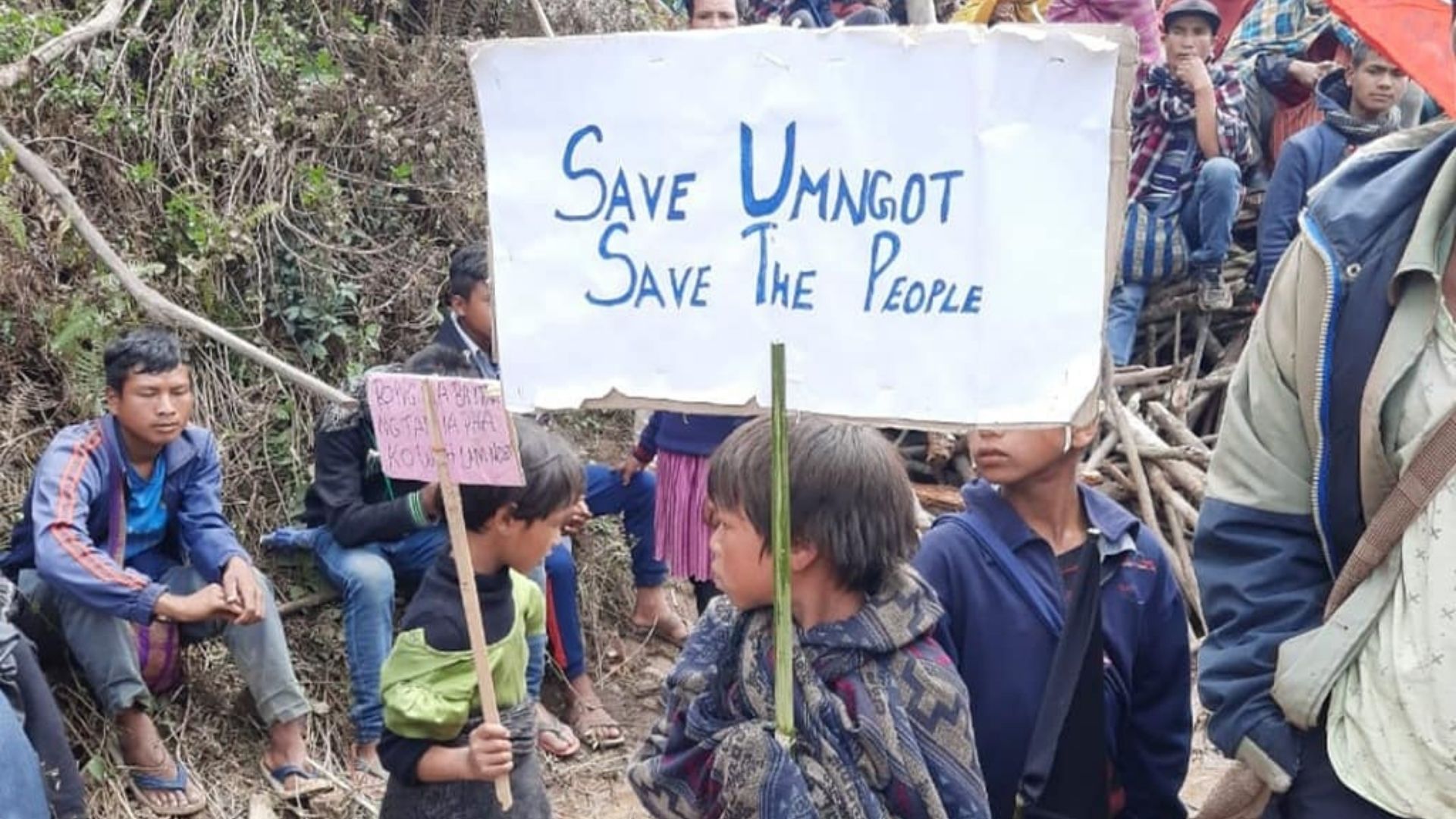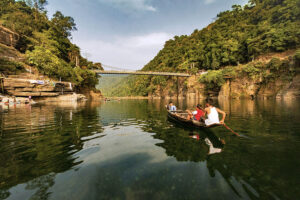Waves of protest over dam on Umngot river in Meghalaya

Move of Meghalaya Energy Corporation Limited to construct a dam has been met with vehement protests by locals and farmers
“Oh Umngot! You must not remain only a memory,” is the slogan that has been echoing through parts of Meghalaya for about a month now.
Tides of protests in people of the Khasi community have been bubbling for weeks to protect the Umngot that flows through the hills of the East Khasi region and where a 210 mw hydroelectric project has been proposed.
The move of Meghalaya Energy Corporation Limited (MeECL) to construct a dam has been met with vehement protests by locals and farmers. Despite this, the state government is in no mood to back down and is reportedly going ahead with the project, as per news reports.
Controversy of crystal clear waters
Considered one of the cleanest rivers in India, Umngot is the natural divide between the Jaintia and Khasi hills and it flows into Bangladesh, through Dawki. For ages now, the river has been rarely explored but has gained the attention of tourists for quite some time now, mainly for its crystal clear waters. Dawki bridge over the river is a suspension bridge and serves as a place for tourists to enjoy panoramic views.
Starting on March 27, 2021, farmers from the six villages – Umsawwar, Pashang, Mynsang, Mawsir, Mawdulop and Ksanrangi village in East Khasi Hills assembled at Mawsir village to register their protests. According to the farmers, the only land they have is being used for agricultural purposes where they earn their livelihood and they are absolutely depending on agricultural practices.
Concerns of villagers
“If the proposed Umngot project is constructed, our land would be completely submerged by water and it would affect their future generations forever,” says Basuk, a 44-year-old farmer from Mynsang village. “Official documents of the project say that residents of 13 villages along the river may end up losing 296 hectares of land due to submergence,” says Natali Deibor, a 28-year-old resident of Dawki, a village on the banks of Umngot.
According to Basuk and other villagers, besides agricultural land, there will also be a great loss of their biodiversity resources as the region is rich and the dam will also have a serious impact on water springs in the area and small streams which flow into the Umngot river.
Acts of resistance
Deibor says that the dam is facing stiff resistance. “On April 9, for instance, a public hearing organised by the Meghalaya Energy Corporation was stormed by over 100 protestors who claimed that the proposed dam would harm their tourism-based livelihood,” she tells Media India Group.
Organised at the Moosakhia Village in the West Jaintia Hills District, this was the second meeting disrupted by protestors. “The first one that was scheduled to be held at Siangkhnai Village early this month, was cancelled after protestors sat on the road and refused to allow public officials’ cars to pass,” says Deibor.
The initial survey for the hydroelectric power project kicked off in 2007. One of the members of North East Slow Food & Agrobiodiversity Society, which has been working with the local community of Umsawwar in the East Khasi Hills, says that if the dam is constructed, it would go against the Articles 25, 26, 31, and 32 of the UN Declaration on the Rights of the Indigenous Peoples, to which India is also a signee.
He says that hundreds of people living near the river are afraid of the government’s plans. “They are afraid that building a dam over it would gravely affect their livelihood which is majorly based on tourism,” he says.
Locals take on MeECL
According to a report by the Meghalaya Energy Corporation, the dam over the Umngot River had been planned to provide a source of hydroelectric power. “The project is proposed to be implemented with a dual objective of narrowing the gap between demand and supply of power as well as the adverse ratio of hydro and fossil fuel power generation,” it reads.
At the same time, the report seemed quite unclear about what will happen to the people displaced by such a construction, says a member of the Agrobiodiversity Society. The report only mentions a proposed resettlement and rehabilitation plan that also will provide the people with monetary compensation. It, however, acknowledges a minor loss of cultivated land, which is exactly what the villagers are concerned about right now. Apart from the hydroelectric power component, the report does not mention any other significant benefit that the construction of the dam on the Umngot river would bring to the people.
Despite a month of the ongoing protest, Meghalaya’s farmers and local residents cause remains almost invisible in the mainstream media. “Not surprisingly, the protests have not been covered by mainstream media, assumingly because of the larger trend of ignorance of matters happening in the northeast,” adds Dawki-based Deibor.
Expressing her grievances, she says she speaks for thousands of others that money has no value compared to land and they will not let the government just take away their land & livelihood from them.










